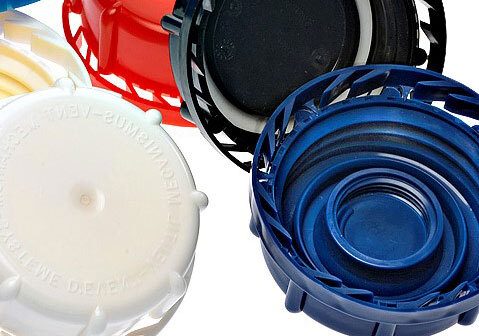Caps and Closures 101
- Basic information about caps and closures
- The caps and closures that seal up steel drums and IBC Totes are the first and last line of defense
- Closures are designed to hold the contents of the drum or tote and prevent unwanted entry of contaminants
- Caps need to be strong enough to withstand the pressure of the contents, which can vary depending on the product
- Vented closures help to extend the shelf-life of a product by allowing a slow and steady release of pressure
The first line of defense against the forces of nature and the world of logistics
The caps and closures that protect and seal in the contents of steel drums, IBC Totes, and jerrycans are the first and last line of defense. They are designed to ensure that nothing unwanted gets into the packaging in use, while also making sure that nothing unwanted leaves the container and enters the environment we all share.
By ensuring that caps and closures are properly sealed, the container's contents remain safe and secure during transport and storage. Some industrial closure systems feature a tamper-evident design to show whether the container has been opened, while others are designed to be more secure. In all cases, a cap or closure should match the specific application to make sure that it is the right fit for the job.
Caps and closures vary in size and shape, depending on the type of drum or tote. Typical compositions are plastic or metal.
Non-vented closures
Non-vented caps and closures are designed to be as airtight as possible so that specific materials can be transported or stored without contamination. These caps and closures are meticulously crafted to ensure an airtight seal, leaving no room for even the tiniest hint of air to infiltrate.
Their purpose is clear: to safeguard the integrity and purity of the content within. With non-vented closures, the risk of unwanted elements compromising the quality of sensitive substances is significantly reduced, allowing for peace of mind and the assurance that the materials will remain untainted until they reach their intended destination.
Vented closures
Vented closures prevent expansion beyond a container's capacity to withstand the build-up of gasses. Strength plays a factor. Caps need to be strong enough to withstand the pressure of the contents, which can vary depending on the product.
Vented closures also help extend a product's shelf life by allowing a slow and steady release of pressure. This release is particularly important for food products, as it keeps the contents fresh and prevents spoilage.
Furthermore, vented closures help to reduce the risk of contamination by preventing moisture from entering the container and contaminating the contents. Vented closures are an important part of any successful packaging and storage system.
CLICK HERE to learn more about The Role of Vents in Caps and Closures.

